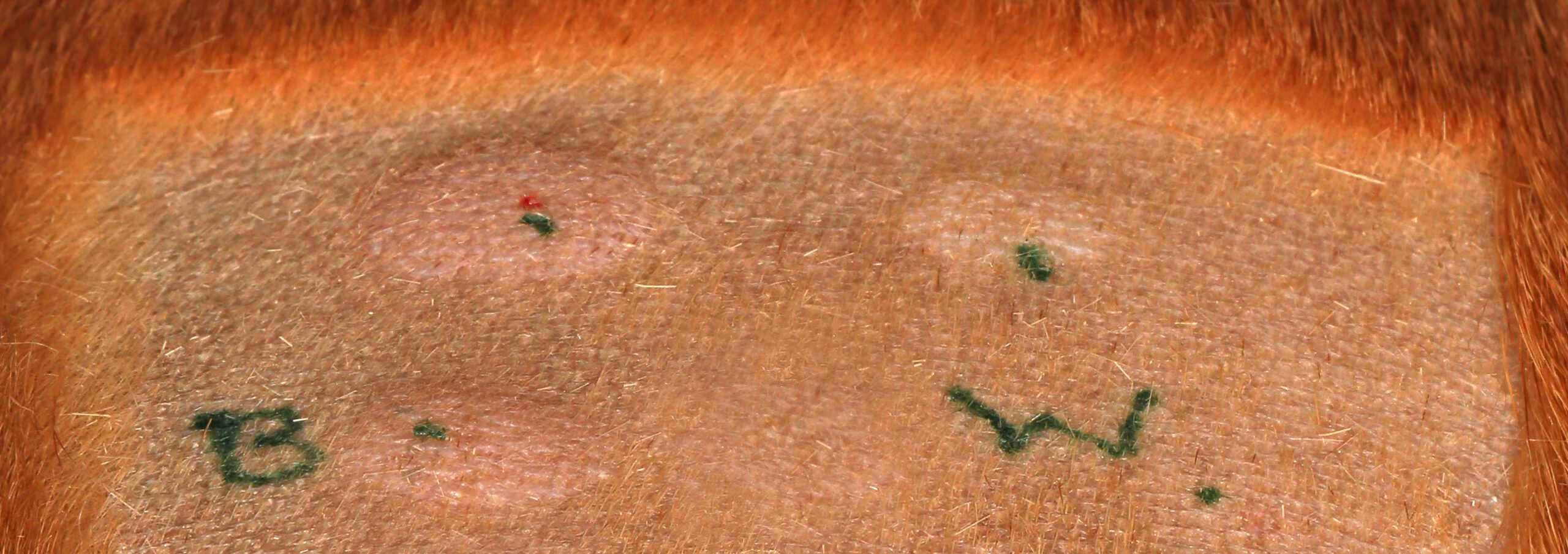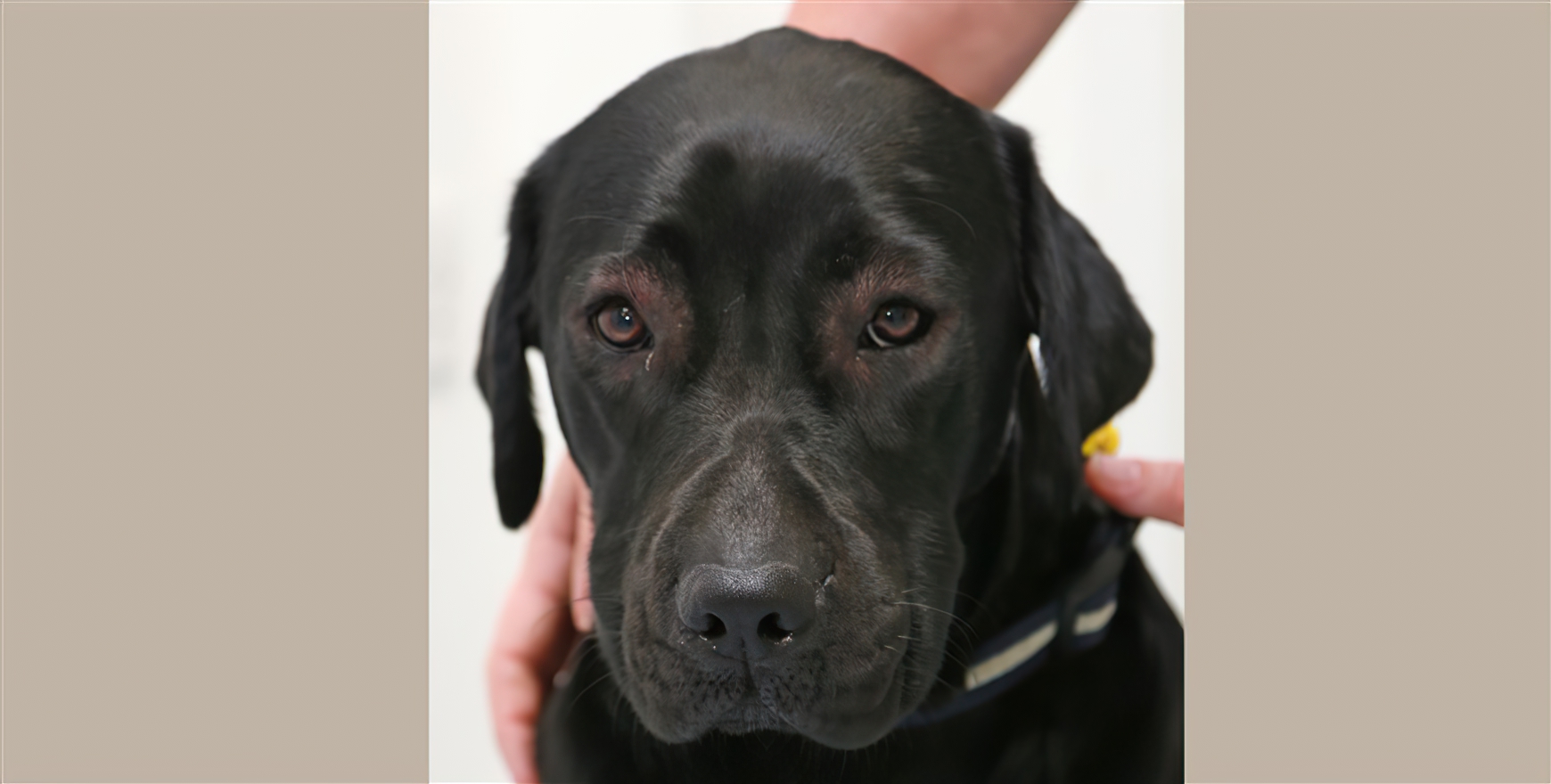Insect Venom Anaphylaxis
I am now able to offer bee and wasp sting intradermal allergy testing followed by potentially curative immunotherapy. Once the offending insect venom has been proven with the initial; skin test, desensitisation can be achieved with a course of injections.
What happens in Insect Venom Allergy?
- Serious reactions to bee and wasp stings can occur in our pets and may affect the skin (hives, swelling of the face, lips and tongue), the gastrointestinal system (vomiting, diarrhoea), respiratory system (airway obstruction and/or wheezing) or the circulation (low blood pressure, causing collapse).
- The former reaction is termed urticaria and angiodema and the latter is anaphylaxis
- If humans are allergic to venom, there is 50-70% chance that a similar reaction would happen again if stung by the same insect.
Treatment and Management
1. Observation:
In the event of a repeat episode of anaphylaxis, definitively identifying the insect involved, might negate the requirement for intradermal testing.
2. Avoidance:
i. Avoid areas likely to have increased populations of bees & wasps if possible
ii. Keep dog confined indoors
a. Whilst gardening and trimming, especially fruit, trees
b. Whilst working on roofs and lofts (wasps)
c. Avoid public litter bins especially in late summer (wasps)
3. Insect Repellent:
Consider, at least seasonal, use of repellent collar Scalibor®, MSD) or spot-on (Advantix®, Boehringer-Ingelheim)
4. Emergency treatment:
i. Remove sting (if bee)
ii. Consider prompt, use of an EpiPen®, human ‘self-administration’ adrenaline injector, 300μg/ml IM injection (unlicensed):
a. But despite advice on many websites, the evidence-base suggests that this method of first aid may be ineffective (BSAVA Formulary, 9th edition)
b. This treatment should only be used after discussion with your vet and should only be used in an emergency, when there are clear signs of a life-threatening reaction developing after a definite sting.
c. Use of an EpiPen® should always be followed with a visit to the closest veterinarian. Bring the EpiPen® so that the vet can see what was used.
iii. Seek veterinary care immediately, ideally travelling promptly and directly to a major centre that provides 24-hour emergency service (even though the event may have occurred during daytime).
iv. Recommended treatment for anaphylaxis:
a. Rapidly gaining intravenous access and supporting circulation using fluid resuscitation
b. Treatment should include intravenous steroids and antihistamines
c. Depending of the severity of the reaction, and response to the initial treatments, intravenous adrenaline and even rapid anaesthetic induction to allow intubation and oxygen provision may rarely be necessary
Insect Venom Immunotherapy (IVIT)
- IVIT a very effective form of treatment for hypersensitivity.
- I commonly perform intradermal testing (IDT) in lightly sedated, aeroallergen-allergic patients in order to define desensitisation vaccines and, when feasible, formulate avoidance strategies. The principal is the same for insect venom IDT – see http://www.theskinvet.net/veterinary-surgeons/canine-atopic-dermatitis/intradermal-testing/ and http://www.theskinvet.net/clients/immunotherapy-for-atopic-pets/. Reactions to very gradually increasing concentrations of both honeybee & wasp venom are carefully assessed and compared.
- Serological (blood) testing for bee and wasp venom allergy is not available for dogs
- For insect venom allergen-specific immunotherapy I use a clustered modified rush desensitisation protocol
- Thereafter monthly top-up injections are then required every 4-8 weeks, depending on type of venom employed, to complete a 3 to 5-year course
- Side effects – dogs may appear lethargic after the injections, tThe injection site may become inflamed and very rarely there can be bad reactions (similar to the actual sting reaction)
- It always works for wasp allergy
- Response rates appear to be good, similar to humans – for bee allergy, 80% of people are ‘cured’ & the remaining 20% still over-react but in a much milder way
- The protection is long-term, even after the course has stopped



